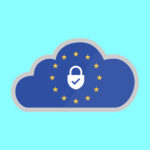 The Liver Meeting may be organized by the American Association for the Study of Liver Diseases (AASLD), but half of the annual conference’s nearly 10,000 attendees — hepatologists and hepatology health professionals — come from countries outside of the United States, Canada, and Mexico. AASLD wanted to graphically represent that impressive statistic by showing where exactly international attendees were traveling from — and engage them in the process.
The Liver Meeting may be organized by the American Association for the Study of Liver Diseases (AASLD), but half of the annual conference’s nearly 10,000 attendees — hepatologists and hepatology health professionals — come from countries outside of the United States, Canada, and Mexico. AASLD wanted to graphically represent that impressive statistic by showing where exactly international attendees were traveling from — and engage them in the process.
Denise Seise, AASLD’s senior director of meetings and education, had seen how other shows recognized international attendees by projecting their names and countries of origin on big walls at convention centers, but she didn’t find the idea of proofing and managing that sort of list while she was on site appealing. So in 2014, she spoke with AASLD’s registration company, Convention Data Services (CDS), about creating a digital map to identify registrants’ home countries.
SMALL SCREEN TO BIG
The result: the interactive, touchscreen Geo Attendance Map, which AASLD calls the “Where in the World Map.” It was first tested out at The Liver Meeting 2014 at the Hynes Convention Center in Boston, with a low-profile debut on a small-screen kiosk in the registration hall.
Meanwhile, in AASLD’s booth out in the main lobby hallway, a huge interactive wall with games and a Twitter feed wasn’t getting much traffic. “I think on the second-to-the-last day of the meeting, we had noticed that people were using the small kiosk in the registration area,” Seise said, “and so we thought, ‘Let’s put the map up on the massive wall touchscreen and see what happens.’ It was a big hit with our internationals. They would go over and touch their country, and if needed, scroll down the list of names [that popped up] until they found their names, and they’d stand next to it, point to their name, and take their picture.”
Given its popularity at the 2014 meeting, the Where in the World Map had a larger presence at The Liver Meeting 2015, held on Nov. 13–17 at San Francisco’s Moscone Center: a 60-inch touchscreen on a prominent kiosk in the registration area. The map was also included in an interactive video in AASLD’s pavilion on the show floor, where its features were explained.
While the map’s position at the meeting was upgraded, the 2015 version didn’t have many new bells and whistles — and that was deliberate. When Seise considered how much information to provide when people touched on the map to see who else from their part of the world might have registered for the conference, privacy concerns for attendees — 75 percent of whom are physicians — took top priority. Only the number of registrants, their names, organizational affiliations, and home locations appeared in a box on the screen.
“We tried to strike a nice balance,” Seise said. “I think for right now, for last year and this year, we really did it for curiosity, for information, to be able to present, ‘Here are all the different places our attendees are coming from.’ It’s a pretty impressive list of countries. We do it to subtly show the global reach of our meeting.”
PUBLIC VS. PRIVATE
Going forward, Seise wants to make sure that exhibitors are also taking full advantage of the tool. Understanding where attendees are coming from “can help them to staff their booth,” she said. “If they have an office in a country where we have a large number of attendees, maybe they want to make sure that they have someone who speaks that language, if it’s a single-language country, in their booth.”
For The Liver Meeting 2016, AASLD is considering whether the map should be made available on its website, leading up to and/or shortly after the meeting. At a minimum, AASLD may post the map to indicate the number of attendees from each country, state, and city without providing names. “You have to be careful about how much information you make available to the whole world,” Seise said. “Because even if we’re not putting in the contact information, address, or email, it’s not uncommon for someone to hire a group and say, ‘Hey, google everyone on this list and get me email addresses where you can.’ We’re struggling a little with how public to make this list of our attendees, so we want to give it a lot of thought before we make that decision.”
The map has proven particularly helpful in fielding requests from international attendees who want to know if there are other people at the meeting from their home country. AASLD can quickly confirm the number and names of those who have registered from specific countries, states, and cities. But if attendees want to use the map to get in touch with other attendees, for now they are pretty much left to their own devices.
Perhaps that may change if the requests for more attendee information outweigh privacy concerns, although past history hasn’t suggested that there’s a strong enough demand. (See Breakout, at right.) Within the next few months, Seise and several of her AASLD colleagues will visit CDS’s office to “do a big postmortem,” she said, during which they’ll explore the possibility of facilitating attendee connections by adding a function that would allow someone to click on another attendee’s name on the map to send them a message. “We’ll be asking what are our next steps for this map,” Seise said, “what else can we do, and how can we do more?”




